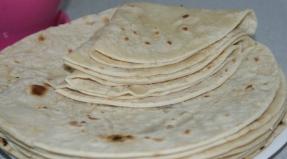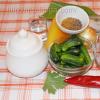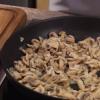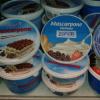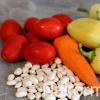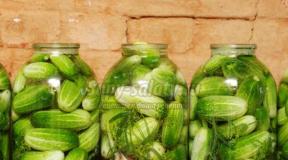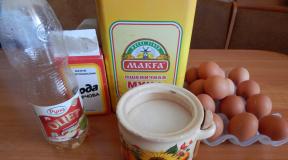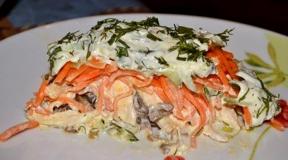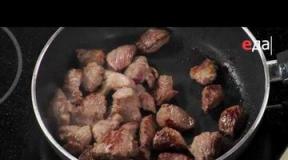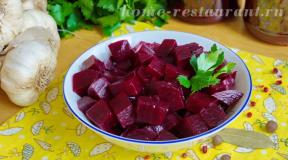What kind of meat do we buy? What meat is better to buy and how to find out for which dish it is more suitable
Probably, there is no such product that would not have caused so much controversy as meat. Everyone knows what hot discussions are conducted about the dangers and benefits of meat. It has long been a dispute about whether a person needs to eat meat or better to give it up. Some argue that a person should definitely eat meat, because the amino acid composition of the proteins of meat and proteins of our body is very similar, besides, people could hardly have become Human Reasonable if they had not eaten meat. Others argue that a person should not eat meat, because in this way he not only litters his body, but also shortens his life.
In addition to scientific differences, there are also national, and religious differences.
For example, the majority of the Indian population — vegetarians; meat, fish, and eggs are taboo for them. And a cow is generally a sacred animal. And in Muslim countries - a ban on pork, there they eat beef, lamb, poultry. And the Slavic peoples somehow always didn’t really like horse meat. But the Tatars and Bashkirs believe that horse meat is the most delicious and nutritious.
But the French are convinced that worse than the meat of a bull, slaughtered during a bullfight, and can not be. But then calves, castrated at the age of several months, and then fattened according to a special system, are highly valued. What can I say, the French - gourmets.
But still, most people eat all kinds of meat, considering it necessary. Nevertheless, the meat was spoiled by the reputation of defective proteins, which are contained in the connective tissues and ligaments. From them it turns out jelly. People suffering from kidney disease, liver, heart of jelly and strong broth is better to forget. But those who have frequent bleeding and poor blood clotting, jellies are useful. As you can see, there are no absolutely harmful products.
But all, without exception, will not benefit fatty meat. It is rich in fats that are difficult to digest, these surpluses are deposited, contributing to the development of atherosclerosis. It is better to replace fatty meat with lean.
Pork contains enough B vitamins and zinc, which is necessary for healthy skin, hair and nails, and zinc is indispensable for men at all ages. Zinc contained in meat is very well absorbed. There are not many men willing to give up meat. Among meat lovers, it is men who prevail.
In meat products a lot of iron, which is necessary for the formation of hemoglobin and to avoid anemia. Iron, which is contained in lamb, is very easily absorbed, without giving waste. Iron contained in meat is 20% better absorbed than iron from plant foods.
All types of meat contain B vitamins that help strengthen the nervous system and prevent anemia.
Good quality meat is digested very well. Fresh beef is bright red, firm and elastic, and fresh veal is soft pink, moist, juicy and elastic.
Frozen meat can not be thawed in water, so you lose nutrients, better put it on the bottom shelf of the refrigerator.
Meat is best combined with vegetables. Thus you contribute to the better absorption of nutrients from the meat. For example, to better assimilate iron from meat, add lemon juice, onions, and greens. Thus, you will also remove excess fat content of meat.
You should also be aware that roasted meat lingers in the stomach for 4-5 hours, boiled for 3-4 hours, and broth for 2-3 hours. Therefore, before bedtime it is better not to eat meat.
Even a harmful product can be useful if you use it in moderation, remember homeopathy. In homeopathy, people are generally treated with small doses of poisons. Also a useful product can become harmful if you overdo it. Therefore, the main thing is the measure and good quality of the product.
Photos: www.flickr.com
Today, shops sell meat for every taste and in any price range: from the most common pork ham to a basics of veal or, for example, beef striploin-steak. You can buy meat from a familiar butcher on the market or in a premium supermarket, paying a lot of money for a quality product. In this case, the question of how not to lose and choose the right meat, still remains relevant. The Village decided to find out from experts what kind of beef is best suited for what purposes, as well as not to be mistaken in choosing pork.
Alla Paranyan
the seller of the meat department of the Danilovsky market
The principles of choosing any meat are about the same. The first thing you need to decide for which dish you choose a piece. If we talk about pork, then the neck, the most juicy part, is best suited for kebabs, kostrets - for roasting, ham - for minced meat, and the spatula - for stewing. The situation with beef is as follows: tenderloin is suitable for frying, and also for tartare and carpaccio, bacon - for stewing and boiling, ham - for minced meat.
Smell will help to determine freshness - there should be no foreign smell, except for the natural smell of fresh meat. Then look at the color: the fat should be white, the pork should be pink, and the beef should be saturated red. The brown color of the meat and gray grease indicate the advanced age of the animal and the lack of freshness of the meat. I also recommend touching the meat: the cut should be practically dry and not stick to the hands. You can also put the meat on a flat surface and press it with your finger - a fresh cut will quickly take on its original shape, and the stale meat will be crushed.
What are the external criteria for choosing pork and beef
There are a lot of criteria for choosing meat, even for each cut they are different. The biggest misconception that I propose to get you out of my head is that the meat should be "fresh" and "steamed." If this is your criterion, then you will choose the most tasteless meat. Meat should go through the aging process, in other words, it should rest. So don't be scared if the meat is leeward or dark in color. And this concerns not only beef, but also pork, lamb. At the same time, meat should be smelled - there should be no extraneous odors, except for a pronounced meat taste. There should also be no sticky mucus. And I do not understand people who buy veal, better choose beef of meat breeds, it has a dark scarlet color, as well as various fatty layers.
What about pork. I always choose ugly pork, with uneven fat layers. This almost always suggests that the meat of an animal is from a small farm or meat production. Also pay attention to size. The slaughter weight of pigs of meat breeds is more than 350 kilograms, which means that the same ribs cannot be the size of your palm.
What parts are better for buying
What matters is what you buy meat for. If you want to grill it, then it is better to take pork neck, ribs or flank from pork. If there is time for the daily marinade, then take a hip cut (in the market it is called the back of or the rump). If you want to stew, boil, smoke, bake, then the ham, spatula and brisket will do. Breast and carbonate can be dried and salted.
Beef should also be viewed through the “grill or non-grill” prism. There are not so many soft parts in beef, so you should not evaluate it at all on the principle of softness and tenderness. Do not want to chew - choose the most expensive and tasteless part: fillet, tenderloin. Just tasteless, soft lean meat. For roasting in a pan or grill, a thin beef rim, a thick rim, shoulder blade sirloin, inner and outer diaphragms, a flank and so on will also work. For the first course, I like the beef neck the most: the perfect combination of meat and fat. It is better to smoke beef brisket and ribs, dry - rump, or, as it is now called, ramp. But tartar is best obtained from the eye muscle, or, as it is also called, fricandon. Yes, the meat is quite tough, but very fragrant.
Where to buy meat
It is better to buy meat from your butcher, who is already a member of your family, or, if there is none, the products of proven meat processing plants. Meat on the market and meat in stores is different. The stores mainly sell meat from industrial producers, but this does not mean that it is bad. Just different - to taste, packaging, packaging, appearance and so on.
In this case, the sellers are deceiving us from our meat illiteracy. Very often, shoulder blade loaves are given out for tenderloin or, say, pork tenderloin, for calf fillet. To avoid such deception is possible only in one way: buy meat more often, cook it, discuss it with friends, go to good meat restaurants and read literature. And also to prohibit the expression "fresh meat".
The first sign on which to choose meat is its smell and color, as it has its own type of meat. For example, a lamb should have a more tender smell than mutton, and good beef cannot smell rotten: it should smell like fresh meat without any impurities (this smell cannot be described, I’m a chef for 20 years and, unfortunately, and can't describe how good meat smells).
Appearance and taste also depends on the fattening: eating grassy fattening, eating cereal, eating corn or, say, mixed. Now to the color: veal should be pink, pork - light. And beef beef strife. If we take our cow, which we milk all our life, and then we kill for meat, then such meat should be bright red, without foreign smells.
Much depends on what we want from meat. Each piece has its own purpose - stewing, frying, boiling, and so on. If we buy meat in order to cook the soup, it must be shank (if it is beef), as well as all sorts of cuts with bones. If you take our cow cow, then such meat is not suitable for anything other than meatballs and stewing. And if you take the breed of Aberdeen or limousine, for example, they are more likely to be suitable for frying.
There is no such thing as "a place where it is better to buy meat." For some, the natural option is premium stores, and someone loves the markets more. Everything is simple here: it depends on what the person is used to. And in order not to buy from an unscrupulous seller instead of any clippings for something else, you need to understand and know the physiology of the animal.
Best of all, if the meat after slaughter is resting. Especially now there are all sorts of aging chambers that allow the meat to cool, and many farmers began to buy them for aging meat. Post-exposure time depends on what exactly they want from meat, and in some cases it reaches 120 days. In general, in the chambers the meat is fermented, and this gives it an interesting taste.
Few consumers know what happens to meat after slaughter, how safe it is to chilled, fresh or frozen meat. And he also does not understand how to determine which meat has the best taste. This is a very interesting situation and problem. Our ancestors kept slaughtered animals carcasses on the glacier or in the cellar. But industrial processing and processing of meat led to the need for careful study of all the processes occurring in the muscle tissue of animals from the moment of slaughter until the appearance of meat on the shelves of stores.
From the moment of slaughter, the meat goes through several stages of change. After slaughter, the animal's carcass cools down (at this stage, the meat is considered "fresh"), then comes the "death numbness", and after a while - the phase of relaxation of the animal's muscle tissue. From the moment of tissue relaxation, the meat ripening phase begins.
Surely, have you heard anything about the "fresh"? This is exactly fresh meat, that is, meat of just slaughtered and diced cattle. And for some reason it is believed that only such meat is the softest, tender and tasty. It's a delusion! In order for the meat to get the right consistency and a special "meat" taste, it must pass the stage of rigor mortis and "ripen" for a sufficient amount of time.
"Fermentation" or "ripening" of meat
Under this tricky name hides a somewhat obscure notion - “controlled rot”. Do not be surprised, just in a professional environment prefer shorter and not frightening terms. In the future it is worth getting rid of quotes. So let's consider in time the changes in meat since slaughter. It should immediately make a reservation that the state of livestock to slaughter, slaughtering equipment and temperature-humidity storage of meat affect the whole process from slaughter to buying meat in a store.
After slaughtering a series of physicochemical changes occur in meat. First comes the stiffness of meat, and after a few hours - the process of relaxation of muscle tissue. Without compliance with the correct temperature and humidity regime, “controlled rotting” will become uncontrollable and the meat will begin to deteriorate rapidly. A few hours after slaughter, there is a phase of numbness (pork - about 3 hours, beef and lamb - about 4-6 hours). And this process lasts for 2 days at a temperature close to 0 ° С, at a higher temperature (15-18 ° С) - 1 day. Therefore, it is believed that the meat after slaughter should be stored for 2 days in a cool ventilated room (in the form of carcass or half carcasses) before sale.
The optimal storage temperature for beef is from -1.5 ° C to -0.5 ° C (meat does not freeze at this temperature). It is this meat that is considered "chilled." With increasing storage temperature, the development of bacteria increases rapidly.
At optimum temperature, proper humidity and proper air convection in the meat storage room, the process of maturation (or fermentation) of meat occurs. The duration of maturation ranges from several days to 4 weeks. During this period, the meat loses moisture (even up to 10% of the weight of the carcass), and the enzymes contained in the muscle tissue destroy the hard connective tissue. All this leads to an improvement in the quality of meat - it acquires a bright, concentrated taste, it becomes softer and more tender.
From the above, we can make a simple conclusion. Such ripe meat in the store is unlikely to buy. But dishes from such meat can be tasted in expensive restaurants that buy premium class meat. Therefore, one should not be surprised at the cost of steak in such a restaurant.
Problem of choice
The farmer’s desire to sell slaughtered meat as quickly as possible is primarily due to the fact that in this case the farmer is relieved of the necessary hassle and storage costs of un sold meat. Surely you have noticed that by the close of the market not all the meat on the shelves sold. And where will this meat be stored the night before the next day, for example, if it happens in August? That's it!
Meat bought on the market during the cold season, especially if the seller swears that the pig was slaughtered yesterday, it is reasonable to keep it in the fridge for a few hours before cooking. In the warm and hot season, it is better to buy chilled meat in specialized meat stores. Look at the frequency with which the meat is delivered. In such stores, chilled meat is stored in counters-refrigerators. A regular supplier of meat simply by virtue of using standard technology can properly process meat. To do this, they have the necessary equipment, experienced staff, technologists. For meat processing plants, the processing of meat is quite routine, and it allows the supply of chilled meat of consistently good quality to the retail chain.
Buying frozen meat is not the worst option. Again, when a meat producer uses the method of shock freezing, it is safest to buy frozen meat in the hot season. It is quite suitable for cooking kebabs. Keep in mind that most restaurants work just with frozen meat. We just do not guess about it.
"Shock freezing" and "fast freezing"
The shock freezing of products, including meat, implies the fastest possible freezing of products at a temperature of -40 ° С (sometimes even at -50-60 ° С). During slow freezing, large ice crystals are formed in the bulk of the product, which destroy the structure of the product, while shock freezing produces very small crystals that cannot seriously disrupt this structure. This applies to almost all products - vegetables, berries and fruits, meat and fish.
Now this technology is used almost everywhere. After a certain time, such freezing can be further stored products at higher temperatures (for example, at -18 ° C).
Modern and not cheap refrigerators have a “quick freeze” mode (usually referred to as “Super Freeze” or “Super Frz”). Unfortunately, such a function does not allow for shock freezing, but, nevertheless, it allows to increase the shelf life of frozen products with the maximum possible preservation of their quality. In some models, the quick freeze mode switches in an hour or two to the previously set temperature mode. But in any case, do not allow quick freezing to last more than 3 hours. Usually, domestic refrigerators do not allow getting temperatures below -24 ° C in the freezer. Nevertheless, such a function is extremely useful, you just need to follow some rules.
First, it is advisable to immediately set a quick freeze mode (at least a quarter of an hour) before laying products. Secondly, the purchased piece of meat should be divided into portions on the basis of “one cooking”, each piece should be placed in a plastic bag and tightly tied up to prevent a large loss of moisture during storage. This method of freezing allows you to use a portion of the piece entirely, preventing re-freezing of the rest of the meat.
When defrosting meat at home, you need to follow a simple principle - the longer the defrosting process, the better. Using a microwave, oven, or bowl of hot water to defrost meat is an extremely unfortunate way. The most correct thing is to put the frozen piece of meat in a bowl and put it in the fridge on the lower shelf, providing air access. Put the meat in the fridge for the night, and in the morning you will have the meat unfrozen and ready for cooking. In extreme cases, you can leave the bowl of meat on the table at room temperature, again providing access to air.
Signs of fresh and quality meat
- The frozen meat does not have a dark surface, the fat is not colored, while pressing (warming) a dark stain remains on the meat (otherwise the meat is frozen frozen).
- Chilled meat has a pale red crust on the surface. The surface of the fresh cut is slightly damp. Meat juice is clear (otherwise it is defrosted meat).
- Chilled meat should not be contaminated, blood clots, bruises, remnants of internal organs.
- On the frozen meat should not be ice and snow.
- Broth from chilled meat should be transparent, fragrant, with large drops of fat on the surface, without any foreign taste, with a minimum amount of foam (otherwise it is thawed meat).
Let's sum up
Indeed, fresh meat does not possess high taste qualities, the broth from such meat will not be transparent and fragrant. Prior to ripening (that is, during the numbing period), the meat remains too hard and the broth from it will also not be tasty. Only meat that has passed through the stage of ripening acquires a soft, tender and juicy texture, a pleasant taste and aroma characteristic of meat, and when cooked, it produces a clear and fragrant broth.
The most important parts of beef carcass

1. The neck.
The neck (nick, neck) is relatively inexpensive because it is muscle tissue, a large proportion of which consists of tendons. The neck is suitable for making goulash, but when preparing meat, care should be taken to remove the tendons. In addition, from the pieces of the neck, you can make a good stew or strong soup broth. This type of meat requires a long cooking time at high temperature and in the presence of liquid, so the main methods of its preparation are cooking and stewing.
2. Back of the head.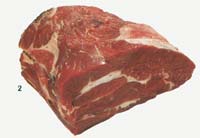
This part is known by various names (neck, meat for baking). The meat of the nape has layers of fat and tendon, however, with a sufficiently long cooking time, you can get a juicy roast from it. The upper part of the neck is used for cooking marinated meat, for roast or for minced meat.
3. Scapula with scapula.
This part of the back, bordering the loin, is sometimes called the thick or table edge. It is sold with or without bones. Meat blade fine-fiber with marble interlayers, which indicates a significant proportion of fat in it. The spatula of a young animal is suitable for roasting and grilling. besides, it is valued as especially tender boiled meat. To shorten the cooking time, the meat is cut into pieces the size of a chop.
4. The scoop of the scapula.
This best part of the shoulder, also called the shoulder or shoulder part, is comparable to parts such as the thigh or rump. The meat has relatively tender fibers and is mainly used to prepare dishes such as beef stroganoff, fried and stewed rolls.
5a. Spatula.
This part of the shoulder is also called the shoulder part. It has not so gentle fibers, as a scapula pulp. Often offered for sale as "meat for roast from the front quarter", it is more suitable, however, for stewing and cooking tender boiled meat.
5 B. Pointed part of the shoulder (shoulder blade).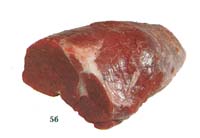
This portion is also called the "fake fillet" and is used to make salted roast, stews, soups, and vegetable eintropes.
6. the front of the brisket (chelshko-trowel).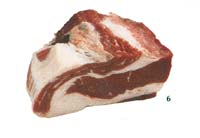
This part has almost no bones, is rich in fat, and is suitable for preparing Eintropf and broth, and in all cases the fat should be removed.
7. The core of the brisket. 
This part belongs to the valuable parts of beef carcass. It is sold either in natural form with bones or boneless. in the form of rolls or pickles. The core of the brisket includes the brisket, has a fatty layer and is covered with fat. if a piece with a bone is used, the butcher should be warned and the bone should be cut, and not cut so that the bone fragments do not get into the broth. From the core get juicy dense boiled meat.
8. The middle part of the brisket. 
This is one of the best parts of beef brisket. It contains some bones, it is the most lean, but quite nutritious part of the brisket. It is used for cooking soup or roast.
9. Breast. 
This is a piece from the front quarter of the carcass, forming the chest. Due to the favorable combination of meat, fat and bones - this is good meat for soups, eintropfs, strong broths, which after cooking should be degreased.
10. Pashinka (curl).
This part makes a good broth. One third of this classic cooking meat consists of bones and cartilage. After removing the bones and tendons, a non-fibrous meat is obtained for boiling.
11a Fillet.
This is the best and most expensive part of beef carcass. It belongs to the dorsal part and is located under the ribs. This is meat for frying. Chateaubriand is cut out from the middle, tournedo from the thinnest part, and filet mignon from the sharp end of the filet.
11b. Cutting.
This most valuable part of beef carcass is the outer part of the back of the animal. The famous roast beef is cut from the tenderloin, the structure of its fibers is loose and tender. From the tenderloin, you can cook a large piece of roast or roast beef, you can cut it into pieces and cook steaks and other dishes.
12a. The flesh of the back.
The meat is lean and at the same time drier and firmer than the meat of the rump, so before frying it should be stuffed and lard. In addition, from this type of meat you can cook fast food, such as beef stroganoff.
12b. Partially trowel, partly rump.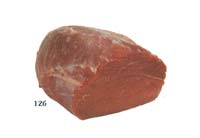
It has thin layers of fat and a loose fiber structure. From this part, you can cut into pieces for quick frying, stewing and frying.
13a. Partially knuckle, partially tilted.
Lean meat is exceptionally well suited for fondue and small rolls with gourmet fillings.
13b. "Meat for the burgomaster".
As the name implies, meat for a burgomaster, also called a women's shoe, is distinguished by good quality. It is fragrant, juicy and allows you to cook exceptionally good stews, roast pickled meat, tender goulash.
14. Oxtail.
It is used to cook a popular soup (oxtail soup) and excellent stews. Before cooking, the tail is cut into pieces about 5 cm long.
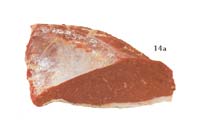
This part is lean, somewhat coarse-fiber and dry, despite the fact that from the inside it is covered with a thin layer of fat. Small rolls are cooked from its middle part, meat is cooked from the end part and get excellent roasts.
14a. Upper part of fender.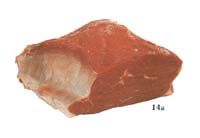
The German name "tafelspitz" also means "the main meat dish of the table" and at the same time the national Austrian dish from the top of the fender, which has a well-known high quality. It is best possible if the meat is not cooked and stew.
14b. Part of the thigh.
This non-greasy, non-coarse meat is suitable for frying, grilling or stewing. It can be cooked tasty on skewers or skewers.
15. Thigh (rump).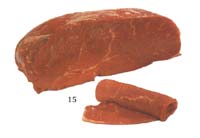
Lean thigh meat is traditionally used for making tender rolls. They are cut from soft tissues adjacent to the lower part of the femur. Of these, you can make the best fondue and raw steak in Tatar style.
16a. Shin pads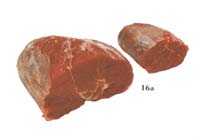
The picture shows the back and front shanks. They are cut into pieces (on sale so-called "pieces of the shank"). The drumsticks of a very young bull or calf are suitable for roasting and for grilling, but require quite a long frying time.
166. Pieces of shanks.
Chunks 4-5 cm thick are on sale. Together with the brain bone and tendons, which are frozen in the jelly during cooking, they are suitable for making jelly, as well as for cooking soups and Eintopophies with various dressings. Chicken meat is extremely tasty, lean and due to its delicate texture, it can be successfully used to make tender stew after bone removal.
The main part of the population of our country loves meat dishes. Unfortunately, often the quality of meat on the shelves of stores leaves much to be desired. Therefore it is very important to know how to chooseto buy a good and quality product.
It is not necessary to work as a chef in the kitchen of the restaurant to learn how to choose the good. It will be enough to carefully inspect the product when buying. For a start, let's figure out what happens and what is more useful.
Meat and norms
Before serving on the counter, the meat is cut according to the norms of state standards, and, washed and cleaned, sent for veterinary and sanitary control. Carcasses are stamped on a mandatory basis, certificates are issued for them, as well as certificates of conformity. If necessary, or at the slightest suspicion of poor-quality products, you can request these documents from the seller. And the seller himself must have with him a sanitary book.
His clothes are clean, light, his nails are short, his hair is collected. According to the norms, the seller should wash his hands every half hour, keep transparent gloves with him so as not to take the meat in his hands.
There are special tables for cutting meat, but in large stores they do not cut meat for the buyer, products are already sold in standard sizes.
What is the meat
Meat is classified:
- by type (beef, veal, lamb, pork, horse meat, poultry, etc.);
- by thermal state, i.e. fresh, cooled, cooled and frozen:
Pair - not cooled down animal meat, after cutting the carcass did not pass 3 hours (fresh meat is not used for cooking, it is tough, it has a specific taste and smell);
Cooled down - 3 hours have passed since meat cutting (not more than a day). If the product is not sold, it is cooled or frozen;
Chilled - meat that is stored no more than 48 hours. It is cooled at a temperature of 0-4 degrees;
Frozen - meat that has been frozen at minus 30-40 degrees in freezers.
According to the form of holidays - sold out, packed up and semi-finished products. Weight meat sold chilled or frozen; Packed meat is harvested at meat processing plants in pieces, approximately 500-1000 g each. Such meat is cooked mainly from chilled meat.
Meat types
What meat is the most useful, the most dietary and the most delicious?
Chicken, turkey, duck, and goose meat are poultry meat that can be found in any butcher shop or supermarket. This meat is distinguished by its nutritional properties, it is quickly prepared, it contains a lot of vitamin B, which promotes shine and strengthens the nails. Also poultry meat is potassium, iron and phosphorus. It contains a small amount of cholesterol, besides the consumption of poultry meat is the prevention of heart disease.
Chicken meat - the most tender and lean. Chicken broth, rich in nutrients, is usually recommended for patients. By the way, only chicken meat is cooked, the rest of poultry meat (duck, goose and turkey) is fried or baked.
Consider that for people with duodenal ulcers or stomach ulcers, it is better to refrain from consuming chicken broth, since it contributes to the secretion of gastric juice.
Duck helps to normalize the metabolism. It’s not for nothing that Peking duck is a popular traditional dish in North China. According to Chinese beliefs, duck fat is very useful for human physiology and cleanses the body of carcinogens. Duck is usually cooked with vegetables and is considered a very useful product.
Goose - the most fat meat of birds. The amount of fat in a well-fed goose can reach up to 40%.
The most useful meat - turkey meatIt contains vitamins that milk and vegetables are rich in. In addition, the turkey is a low-calorie meat, contains almost no fat, while it is rich in potassium. Turkey contributes to the revitalization of the heart and blood vessels, strengthens the immune system and teeth.
We turn to the meat of animals. Low fat dietary meat is considered VEAL. It is strongly recommended to use this boiled meat when restoring the body after various infectious diseases, injuries and burns.
But be careful: veal contains substances that promote the formation of uric acid, which can disrupt the metabolism. And if you are on a diet, then rich veal broths should be avoided.
MUTTON It holds the record for the lowest content of extractives and cholesterol (compared with pork and beef).
Milk lamb meat up to 8 weeks is considered a delicacy: it has a mild flavor and a delicate texture. The animal is very small, and you can cook it whole, in the oven or on a skewer; however, you can cook a carcass, dividing it into four parts. Young lamb meat is very tasty, tender, almost any part of its carcass can be baked. The taste of lamb older than a year is more diverse than the meat of lamb, but at the same time lamb is slightly denser in consistency. Remember that the digestion of sheep fat increases the load on our digestive tract.
PORK useful for children, because this meat contains substances necessary for normal growth and full formation of bones. If you or your loved ones suffer from inflammation of the bile ducts, atherosclerosis, as well as cholecystitis and duodenitis, the consumption of pork fat should be limited.
BEEF contains a lot of protein, useful for children and athletes; iron recommended for the prevention and treatment of iron deficiency anemia; as well as connective tissue proteins that contribute to the renewal of vascular cells, skin and joints. Consider that fatty beef is poorly and long digested in the body, which increases the load on the digestive tract and pancreas.
In meat Horseheads high content of vitamins, fats and high-grade proteins. The protein content depends on the age, sex and fatness of animals.
RABBIT It is considered dietary meat, according to the level and properties of utility for the body similar to poultry meat. Low-fat rabbit meat, consisting of small muscle fibers, is remarkably digested and contains a large amount of protein. Meat also helps to quickly recover from disease, when used does not cause an allergic reaction. But most importantly, rabbit meat is useful for absolutely everyone and has no contraindications for consumption.
In addition to the standard choice of meat, you can also find exotic meat, such as alligator, kangaroo, snake, camel or ostrich, in supermarkets. But this, as they say, is an amateur.
Whatever meat you buy - chicken, veal or pork, there are general characteristics that help you understand whether you have a quality product or not.
Poultry selection criteria
Quality, of course, depends on the age of the bird and its complexion. In stores, no one will indicate the real age of the chicken, goose or duck. But you can define it yourself. Pay close attention to the skin color and condition of the legs. The carcass of a young bird is covered with delicate white skin, the fat is also of a light shade, and on the paws you can see small scales. In a more mature and old bird, the skin is rather thick, rough, with a yellowish tinge.
Consumers most often take frozen poultry. It seems to you that in this case the age of the bird is impossible to determine, because often the bird is sold without limbs. But you can find out the age and the joints of the leg. Mature bird joints will be thick, with a rather coarse cartilage.
If you buy a bird from the freezing racks of open or closed type, then check, first of all, the integrity of the package. Cellophane, in which the bird is wrapped, is very thin and breaks easily. Take the package in your hand and “inadvertently” touch it with your finger. A hole formed? This means that the packaging is of poor quality, air will penetrate into it, adversely affecting the carcass. Put aside such a product and take another. Try to turn the package upside down. Does the fluid flow out? Then feel free to put it in your basket.
Important check packaging for the presence of ice. If you notice the presence of ice in the package, therefore the bird is re-frozen. And this, most likely, indicates that the carcass has already expired, nobody bought it, and the store staff carried out the next stage of the “resurrection”.
Pay attention when choosing!
The tip of the pectoral bone of a young bird is cartilaginous. If you push it slightly, it bends easily.
The skin should be undamaged, smooth, free from stains or bruises, without feathers.
Is the carcass elastic and fairly dry, and the meat with a small cut wet? No unpleasant smell? Feel free to buy! The carcass is fresh.
Sometimes the next question arises before a consumer: what is better - a chicken or a rooster, and how to determine who is who? Better take the chicken - meat fatter and juicier. To know the carcass of a rooster can be on the thin skin. And on his paws, he still has spurs. Chicken skin is whiter and thicker.
Beef and veal. How to choose?
On the cut, the color of high-quality beef is light red, while cooking the meat does not lose volume and weight practically does not decrease. But remember that the color of beef varies from bright red to reddish brown. From these shades you can determine whether it has long been cut. If the meat lies on the counter for a long time, it will be too dark and dry. Quality veal has a dense fabric of light pink color.
There is a pattern: the lighter the color of veal, the younger the animal. Beef has a yellow layer of fat, and veal has a white color. The outer layer of fat, separated from the meat by foil, means that the animal was old.
Signs of pork quality
When buying pork carcass, pay attention to the skin - it should be white, without any stains. This means that the animal was healthy.
Good, fresh pork meat is dense, elastic, odorless and practically without film. The meat should be in thin fatty veins, similar to marble. In young animals, the meat is light pink, in old ones it is darker. If the pork is completely dark, while covered with films, the meat will be dry and tough. If possible, carefully examine the lymph nodes of the pork - ideally, they should be light, pink or gray and not swollen. High-quality fat - dense white or cream, and not pink or yellow
Signs of meat quality of lambs and sheep (lamb)
The most valuable meat is young sheep or sheep, under the age of 18 months, which are unsuitable for breeding. Tasty and meat from fattened sheep (no more than 3 years). You can find out if the animal was young by color. The lighter the lamb slice, the younger the animal. Lamb meat has a pale pink color, and an adult animal has high-quality pale red or brown-red meat. The fat is white and easily separated. The meat is poorly fed, old sheep - dark red, yellow fat. Such meat is stringy, it is better to use it only in the form of minced meat.
Lamb fat has an unpleasant smell, which is why it is rarely used in cooking, and it is also poorly absorbed. By the yellowish shade of fat, you can determine that the animal is already aged .. If the fat is brittle, it means that the meat is overexposed in the freezer.
How to choose horse meat?
Horsemeat should be fresh in appearance, with a shiny wet surface. If you press on the meat with your finger, it should instantly take its original shape. Make a cut or pierce the meat with a fork, then blot the meat with a napkin. Ideally, there should be no wet stains or secretions on the napkin. The color of horse meat is darker than beef, and fat is yellow.
Rabbit meat
Carcasses of rabbits are well-nourished, without bone fractures, not deformed, without bruises and remnants of the skins. Foreign smells and changes in structure should be absent. Depending on the temperature, rabbit meat is divided into chilled, ice cream and cooled. Realizations subject to chilled and frozen meat, and always marked. Fresh rabbit white, slightly pink, without taste, with a soft texture. The meat itself is not fat, has a dense structure, the bones are thin, and the muscles are fine-fibrous. If the rabbit was well fed, then it has small fat layers.
Spoiled meat
By the following features, you can determine if the product is damaged. For example, the gray color of meat. Sticky mucus on the surface of the piece or carcass, turbidity or humidity is an indicator of the development of bacteria in meat.
Burgundy red and gray spots, pigmentation and blood clots clearly indicate improper cooling, poor ventilation, improper storage and meat haul. Carefully inspect the animal's fat. Discreet sellers sometimes soak the meat in a manganese solution to give the meat a fresh color. Potassium permanganate, alas, does not leave a smell, but the fat is stained with a pink tint.
Blurred edges in any meat means that the product was soaked in acetic solution.
Remember, even with the slightest doubt about the good quality of meat, refuse to buy, as eating stale products can lead to unpleasant consequences.
The main machinations of meat related to coloring: by keeping in carbon monoxide or using dyes. If you suspect the use of dyes, make an incision on the meat and see the level of penetration of harmful substances.
Sometimes, before the sale, the sellers freeze the water on the carcass with the addition of antibiotics. Such meat even flies fly side.
Another option is the introduction of a substance into the meat that can provide a “fresh” look and add extra weight, and also warn of “airing”.
Be careful! Eating meat with chemical additives does not contribute to maintaining health.
Imported, wild or farm?
Often the question arises about whose meat is better to buy store (imported), wild animal meat or meat from the farm.
When buying and eating wild animal meat there is a danger of being infected with viruses that are difficult to cure and little studied. Rustic meat from a private courtyard also may not always be clean. Much depends on the feed that the animals fed, on how often they were vaccinated with which vaccines, and whether the general rules for keeping poultry or animals were observed, whether the vet examined and whether there are marketing documents. Be careful, whatever meat you prefer, there is always the danger of buying low-quality or contaminated meat. Check with the sellers documents and certificates for meat, follow the rules of the correct choice - this reduces the risk of unsuccessful purchase.
On a note
If you bought frozen meat, then it should be defrosted in advance. With an accelerated thawing process (for example, putting meat in water), many useful properties will be lost. It is better to leave the meat to defrost itself, then save all the vitamins and trace elements.
It is also not recommended to freeze the meat again, so try to take only the necessary part when cooking.
Do not be afraid if chilled pork or beef slightly weathered on the counter - this will not spoil the future dish. But the puddles in which the pieces may lie are unacceptable: additional liquid can wash valuable juice from meat. For the same reason, meat can not be rinsed for a long time under the tap.
Before roasting the meat should be dried with a napkin.
Frozen, benign meat when tapping will produce a clear sound, to the touch such meat is solid.
And finally: white or red?
What meat is healthier? The content of vitamins and proteins in meat does not depend on color. However, red meat contains more iron, such meat is recommended for anemia. But at the same time it contains more cholesterol. Therefore, if there are disturbances in the metabolism of fatty substances in the blood, it is better to eat light varieties of meat, for example, poultry or veal.
Remember the main thing: freshness of meat is determined by the appearance, color, smell, texture, condition of the bone marrow and subcutaneous fat and tendons.

